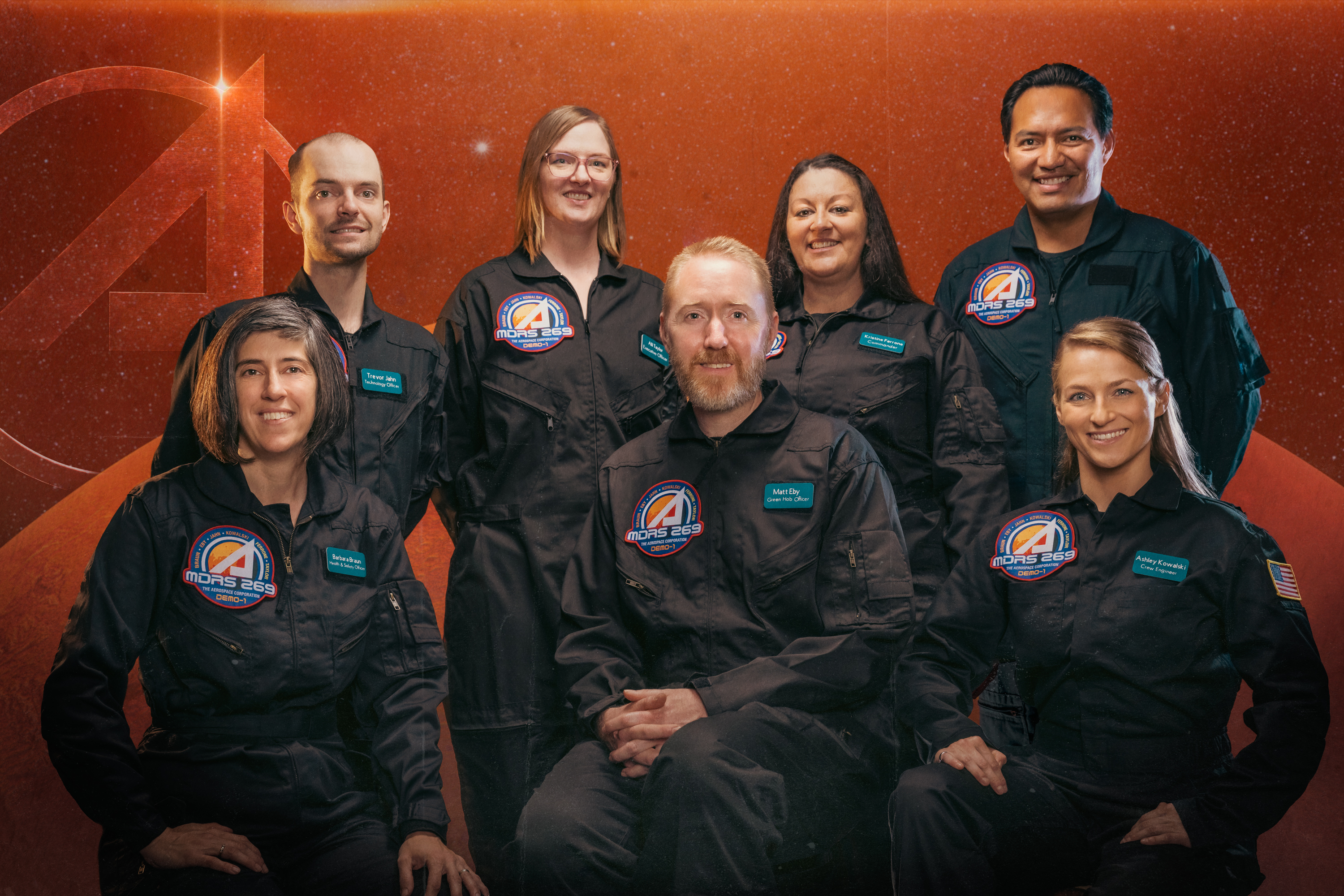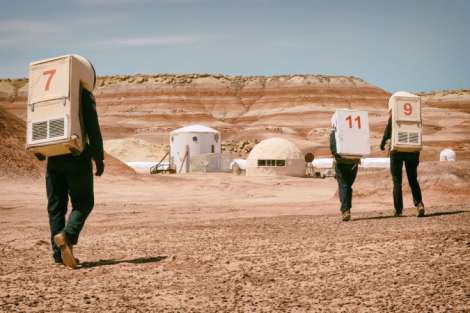Future human missions to the Moon, Mars and beyond will require greater understanding of the space environment to ensure crew members are prepped with the best equipment and practices to sustainably operate and live in space before they embark. Fortunately, analog missions—field tests that mimic space-like conditions—are some of the closest ways to gain critical knowledge of what working in and inhabiting space is like.
To anticipate the needs of future space missions and sustainable operations in cislunar and Martian environments, The Aerospace Corporation is sponsoring a two-week analog mission at The Mars Society’s Mars Desert Research Station (MDRS) in remote Hanksville, Utah, beginning Nov. 27.
Ultimately, the six-person Aerospace MDRS Crew (#269) aim to bring back valuable lessons learned on what it takes to carry out a crewed mission in extreme space environments, expanding Aerospace’s existing body of technical expertise in this area to better support the nation’s goals for the future of human space exploration.
“As we’re moving towards longer-term spaceflight missions, it is critical to mitigate as many risks as possible before sending humans into space,” said Ashley Kowalski, MDRS 269 Crew Engineer and a Project Leader in Aerospace’s International Partnerships Division. “Since you can’t test everything in space the first time around, analog missions can provide on-the-ground insight on what went right during the simulation and what can be improved upon.”
(Image credits: NASA, MDRS)
A New Chapter of a Continued Story
While MDRS Crew 269 represents the first all-Aerospace crewed analog mission in the corporation’s history, Aerospace’s technical experts are no strangers to analog missions, having previously participated in a number of studies and simulations, including NASA’s Scientific International Research In a Unique terrestrial Station (SIRIUS), Desert Research and Technology Studies (Desert RATS), Flashline Mars Arctic Research Station (FMARS), and Human Exploration Research Analog (HERA) programs.
This institutional experience and the involvement of a number of seasoned analog participants were two proof points that have enabled Aerospace to continue cultivating its crewed space exploration and operations expertise.
“The Aerospace Analog Project started several years back [as we looked for] ideas on how Aerospace could better its pursuit of human exploration projects,” said Dr. Kristine Ferrone, MDRS Crew 269 Commander and Senior Engineering Specialist in Aerospace’s Civil Systems Technology Division. “We were able to bring together a lot of human spaceflight experts and other people within Aerospace that have either participated in analog missions or had been part of the engineering crew for them.”
The thorough planning and in-depth discussions on how to best prepare Aerospace for the future of human spaceflight led to an iLab sabbatical and Aerospace’s successful application to MDRS. Awarded a crew assignment for the 2022-2023 field season, the MDRS Crew 269 is completing its final preparation tasks before traveling to Utah.

One Mission, Many Objectives
The Aerospace crew intends to address eight focus areas during its MDRS mission. These activities span across indoor facilities and outdoor extravehicular activity (EVA) exercises. Planned experiments include demonstrating methodologies for tools used on EVA, investigating the feasibility of launching high altitude balloons, and studying and monitoring the environment’s degrading effects on critical instrumentation.
“Because Aerospace helps customers solve the most challenging problems throughout projects’ lifecycles, getting hands-on opportunity out in the field helps us become better engineers on the front-end when we’re developing systems for future human exploration,” said Alli Taylor, MDRS Crew 269 Executive Officer and Senior Project Leader in Aerospace’s Human Exploration and Spaceflight Division. “I’m excited about the potential opportunity to continue with follow-on missions and giving other Aerospace personnel the chance to get involved.”
One example of the unique research opportunities this analog mission will enable is the testing and utilization of an Aerospace-developed virtual reality and augmented reality prototype. A field demonstration of this technology will generate three-dimensional environment models and collect geotagged imagery of the team’s EVAs for data review that will help inform future activities.

“The prototype connects the real world and virtual world together so that we can bring the scientific community into the operational space for the astronauts that might be on an EVA on the Moon or Mars,” said Trevor Jahn, MDRS Crew 269 Technology Officer and Senior Member of Technical Staff in Aerospace’s Space Architecture Department. “The part that makes me excited is that all of the hardware and baseline software already exists, but Aerospace has strung these technologies together in a way that we haven’t seen yet. We’re the first ones to really bring it to the forefront.”
By the mission’s conclusion in mid-December, the crew expects to have deepened its engineering intuition through hands-on tasks and experiences, tested novel systems and technologies that could help future space exploration efforts, and gained an understanding of system-level interactions and integrated operations. Their insights will shape Aerospace’s technical approach to customers’ missions and further drive opportunities among the space community for innovation. The crew also hopes to execute a virtual STEM educational activity with K-12 schools participating across the country, helping to generate excitement for human spaceflight among those who may crew future missions.
“The future [of space] is beyond Earth’s orbit; it’s in the Moon and Mars,” said Barbara Braun, MDRS Crew 269 Health and Safety Officer and Principal Director in Aerospace’s Corporate Chief Engineer’s Office. “Figuring out how the real engineering and infrastructure that will make it possible for us to continue to explore—that’s where we’re taking ourselves into the future and where Aerospace is going to need to have the answers for those engineering challenges.”

